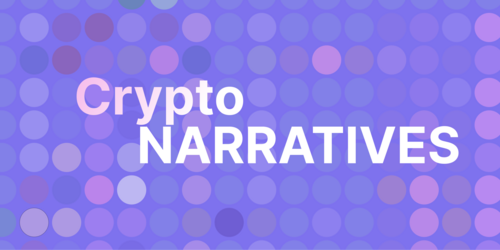What Is Sui?
Sui is a Layer 1 blockchain that utilizes parallel transaction execution to process transactions at a faster speed than other blockchains. It is created by Mysten Labs, a software company that counts key members of Meta's crypto division among its core members.
Key Takeaways
-
Sui is a smart contract Proof of Stake blockchain developed using the Move programming language. The move programming language was originally developed for the proposed Diem blockchain by Meta.
-
Sui uses parallel transaction execution, which enables it to execute transactions faster than blockchains that execute transactions sequentially.
-
Sui also utilizes other features like asset ownership and distributed computing to improve scalability.

With over $300 million generated in fundraisers by Mysten Labs, the team behind the Sui blockchain, the smart contract blockchain was already off to quite a remarkable start. These funding programs were backed by major venture capitalists, including Circle, Binance Labs, Lightspeed Venture Partners, a16z, and NCSoft.
Sui has been hyped as one of the two main spinoff projects from Meta’s abandoned blockchain venture, Diem, with Sui’s co-founders including ex-Meta employees who played major roles in developing the now-defunct Diem blockchain.
Originally, the idea behind the Diem projects was to develop a platform that offers incredibly fast transaction processing speed for significantly lower fees without sacrificing security, and Sui looks to build on top of this idea by creating a blockchain that offers fluidity and flexibility to adapt to different Web3 use cases – hence its name “Sui”, which means water in Japanese philosophy.
After nine months of running its incentivized testnet program, the Sui blockchain launched its mainnet in May 2023.
Now, let’s look at what Sui blockchain is and how it works.
Introduction to Sui
Sui is a smart contract blockchain network built with the Move programming language. It runs the delegated Proof of Stake (DPOS) consensus algorithm and claims to offer super-fast transaction processing speed and a relatively low transaction fee. Sui claims to offer up to 125,000 TPS and about $0.001 fee per transaction.
As a Layer 1 network, Sui is able to run its own consensus system and support dApps, where applications on its network operate without the need to bridge from a parent network. The Sui network supports DeFi, NFT, and utility applications.
Sui claims that its network maintains the security level seen in major blockchain networks while delivering improvements to processing speed and overall efficiency. These features are powered by the Move programming language, Sui’s parallel transaction algorithm, and the DPOS consensus algorithm.
How Does the Sui Blockchain Work?
Like the Ethereum network and other similar smart contract blockchains, the Sui blockchain operates a virtual machine. The virtual machine is a software version of a computer processing unit. It is a virtual vending machine that changes the state of the network as instructed by instructions from contract accounts. These instructions are written or translated into a programming language the machine can work with.
Major role players in the Sui blockchain include;
The Move Programming Language
The Move programming language was inspired by the Rust programming language. It was developed by the Meta team for the Diem blockchain. It is designed to optimize blockchain safety and security by fixing the key issues of Rust. Move is structured to support the development of safer and quicker applications. It defines asset ownership at a code level, allows smart contracts to inherit security, and enables the Virtual machine to easily translate and execute commands from these contracts.
Move developers claim that the language’s linear execution type is a fix for the reentrancy issue that affects other smart contract languages like Solidity and Vyper. This works by clearing the resources for each function from the execution loop once the virtual machine executes the command.
Move delivers a faster compilation time due to a lower level of abstraction, and it offers improved security thanks to the liner type execution. Other features like compilation level verifications to reduce bugs in the bytecode, and syntax level interoperability (due to Move’s bytecode transparency) make Move a cutting-edge language for developing smart contracts.
The DPOS Consensus Algorithm
The DPOS (Delegated Proof of Stake) is a variant of the POS (Proof of Stake) algorithm. The Sui network entrusts the safety of the network to delegated validators. For every epoch, a set of validators is selected to validate new blocks and grow the chain by hashing the new blocks into the chain. Validators stake their assets on the network and stand a chance to get selected based on the amount of assets staked on their node. Validators are awarded a portion of newly generated tokens as a reward for this role. Sui also runs a fee system that compensates validators for infrastructures dedicated to the validation duty. This fee is charged as part of the standard transaction fee.
There are about 100 validators on the Sui network. While many argue that this leaves the network poorly decentralized and prone to 51% attacks, the low validator count also contributes to the network speed as the network is able to reach consensus in a shorter period of time, relative to other networks with higher validator count.
Parallel Transaction Execution
Sui adopts the parallel transaction execution system. This system handles network transactions simultaneously instead of ‘one after the other’ as seen on networks that operate the sequential transaction execution system. Sui claims that this system contributes significantly to its super-fast transaction processing speed.
The parallel execution system routes the Sui network through multiple states simultaneously and delivers a uniform post-execution state. The RPC feeds the network with multiple transactions in defined orders. The network validates these transactions simultaneously across multiple threads. The final validation order may differ, but this doesn’t affect the network’s final state.
Parallel processing puts every resource on the Sui network to use, contracting multiple CPUs and splitting the processing power of the network to handle a series of requests at the same time. In contrast to sequential transaction execution, parallel processing efficiently uses the network’s resources, leaving no idle or redundant processing power in the network and delivering higher throughput.
Transactions on the Sui network are categorized into simple and complex transactions. Simple transactions are able to bypass the consensus and get executed instantly. Transactions such as regular P2P transfers of owned assets are categorized as Simple.
Complex transactions (like transactions containing shared objects) require the consensus system and are handled differently. The Sui network adopts Bullshark and Narwhal, as part of the network’s consensus system to handle complex transactions. Bullshark arranges the transactions in their orders and allows slower validators to contribute to the consensus.
However, to ensure that transactions are processed fast, Narwhal runs a bypass for complex transactions. Narwhal is a Byzantine Fault Tolerant (BFT) consensus and DAG mempool. It is the data availability layer of the network’s consensus system and allows the blocks to the hashed even when some of the transactions fail. As a Data Availability (DA) system, Narwhal holds the details of the transactions it ran a bypass for, this ensures that the network is able to retrieve these transactions and run proper validation for them in case.
Key Features of the Sui Network
Sui network is designed to achieve infinite scalability. The Narwhal consensus can be adjusted to allow networks to achieve up to 130,000 TPS. Sui boasts over 10,000TPS and up to 125,000TPS at peak. It maintains that the network could be adjusted to process even more transactions at this rate. However, information from the network explorer suggests a speed of 99TPS at the time of writing – note that the presiding usage condition is an important factor here. In addition to high TPS and rapid finality, here are other key features of the Sui network.
Asset Ownership
Ownership and custody are two subjects defined by blockchain technology. The idea is to ensure that users maintain true custody of the assets they own, such as NFTs and fungible tokens.
Sui handles assets in a relatively different way. Assets on the Sui network are either shared or owned. An owned object (or asset) has just one owner, that is, by being in the custody of an owned object, you maintain sovereignty over the asset. These objects can be freely transferred to anyone on the network without the need for a consensus. Transactions involving owned assets are executed rapidly, relative to shared objects. Shared assets have multiple owners; they operate in a similar manner as assets on other blockchains. To transact with a shared object, the consensus system must validate the transaction.
During the process of asset creation, the creator defines this property before completing the creation process. The asset ownership system not only contributes to the effectiveness of the transaction handling process but also makes it possible for developers to create varying asset types to suit their applications.
Distributed Computing
The blockchain is a distributed ledger system. The network is controlled by multiple points and different users. Sui adopts this design but claims to feature an improvement that allows it to achieve a higher level of scalability, where its distributed computing feature is meant to scale the network by beefing up resources in case of increased demand.
This design allows the network to expand to the level of the demand it experiences at that moment. Sui developers claim that this allows the network to function more like a cloud service than a typical blockchain network. As the demand on the SuiI network increases, network validators are able to add more processing power. This keeps the network stable, maintains the gas fees to prevent cases of gas fees blowing out of normal levels, and therefore keeps the entry barrier low, regardless of the network’s state.
The distributed computing feature is handy, particularly for developers of high-demand applications like decentralized games, NFT projects, or decentralized social media applications. Applications like these can adopt a subscription model with some resistance to rising gas prices.
Low Gas Fees
Sui hopes to lower the barrier to participation in a decentralized system by offering low fees to the network’s users. However, this can only be achieved if the network is able to maintain a balance between validator charges, extra infrastructures, and the goal of keeping the fees low. At the time of writing, the average fee charged per transaction on the Sui network is about 0.003SUI (3,000,000 MIST) or just below $0.0015 at the current price. To keep the network fee low and prevent significant fluctuations in transaction fees, the Sui network determines the reference charge for transaction validation from the price submissions by validators of the current epoch.
The reference charge is multiplied by the required computation units for each transaction and adjusted for extra charges to obtain the fee for each transaction. Simple transactions on the network are therefore likely to attract a lower fee compared to complex transactions.
Sui Tokenomics
SUI is the native currency of the Sui network. MIST is the lower denomination, where 1SUI = 1,000,000,000 MIST. The SUI token fosters the network and its ecosystem. Fees for transactions are paid in SUI. The SUI token fuels the network’s consensus as well. As a POS-based network, validators stake the SUI token on their node as part of their commitment to protecting the network. SUI holders can also benefit from the system by staking their SUI tokens to their preferred validators’ nodes.
SUI operates a DAO; SUI holders contribute to the project’s governance by voting on proposals on the project’s governance portal. Applications on the Sui ecosystem also utilize the SUI token as their reference token on the platform and grow the token’s value by integrating it into their applications.

The supply of SUI tokens is capped at 10,000,000 (ten billion). Based on the breakdown, 50% of the total supply is allocated to the community reserve. The Sui team claims that this reservation will be utilized for delegation programs, grant programs, research and development, and validator subsidies. 14% of the total supply has been allocated to investors while early contributors received 20% of the total supply as support for interacting with the network in the testing phases.
At launch, the SUI token was listed on top-tier exchanges including Coinbase, Binance, and Kucoin. It still trades on these exchanges at the time of writing. SUI can also be purchased on decentralized exchanges in the project’s ecosystem. See active SUI trading pairs.
Final Thoughts
Blockchain technology is progressing from heavy and relatively slow networks to sleek and super-fast networks. While there are certain trade-offs, contemporary cryptocurrency applications and their users require highly efficient and cost-saving networks capable of handling periods of extreme usage. With the parallel approach to transaction execution and the DPOS consensus algorithm, the Sui network attempts to deliver these features without completely losing its grip on security and decentralization.
Sui claims to bring a lot of desirable features to the table, an impressive transaction processing speed, and cheap fees. But the claims on security might even be the most significant, considering the growing need for attack-proof applications.
It will also attempt to utilize the linear type system and modular asset ownership algorithm powered by the Move programming language to deliver a platform where developers can deploy decentralized solutions with assurance of platform-level security. As the project’s ecosystem continues to grow, we will learn more about how these solutions perform in practice. It is, however, normal to see some fluctuations in performance, especially in applications deployed to the network. Ensure to do your own research before engaging in any investments and note that this article is only for educational purposes and not financial advice.

Joel is deeply interested in the technologies behind cryptocurrencies and blockchain networks. In his over 7 years of involvement in the space, he helps startups build a stronger internet presence through written content. Follow the author on Twitter @agboifesinachi









 Or check it out in the app stores
Or check it out in the app stores